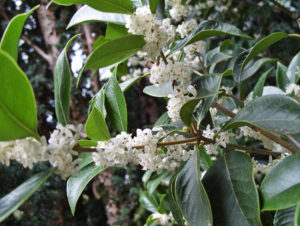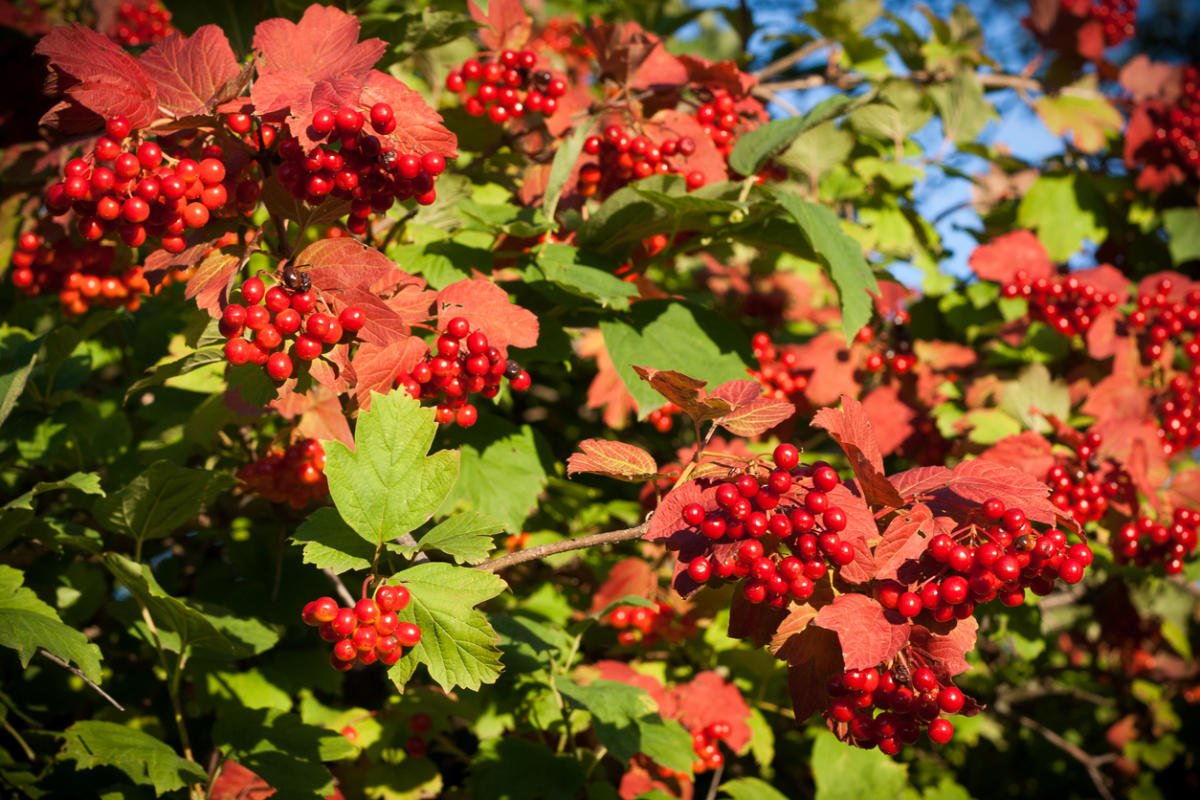
Many people associate the word Viburnum with the definition of “red”. But these days, viburnum has so many varieties that the color of the berries can even be black. Many people love viburnum for its beauty in spring and autumn. In early summer, it pleases us with a beautiful umbrella or spherical inflorescences with a diameter of about 15 cm (5.9 inches), white or pale pink flowers. And in autumn, especially beautiful is the carved foliage of viburnum, filled with numerous shades of orange and purple-red with red berries hanging on the branches. Fruit is a particularly delicious treat for birds.
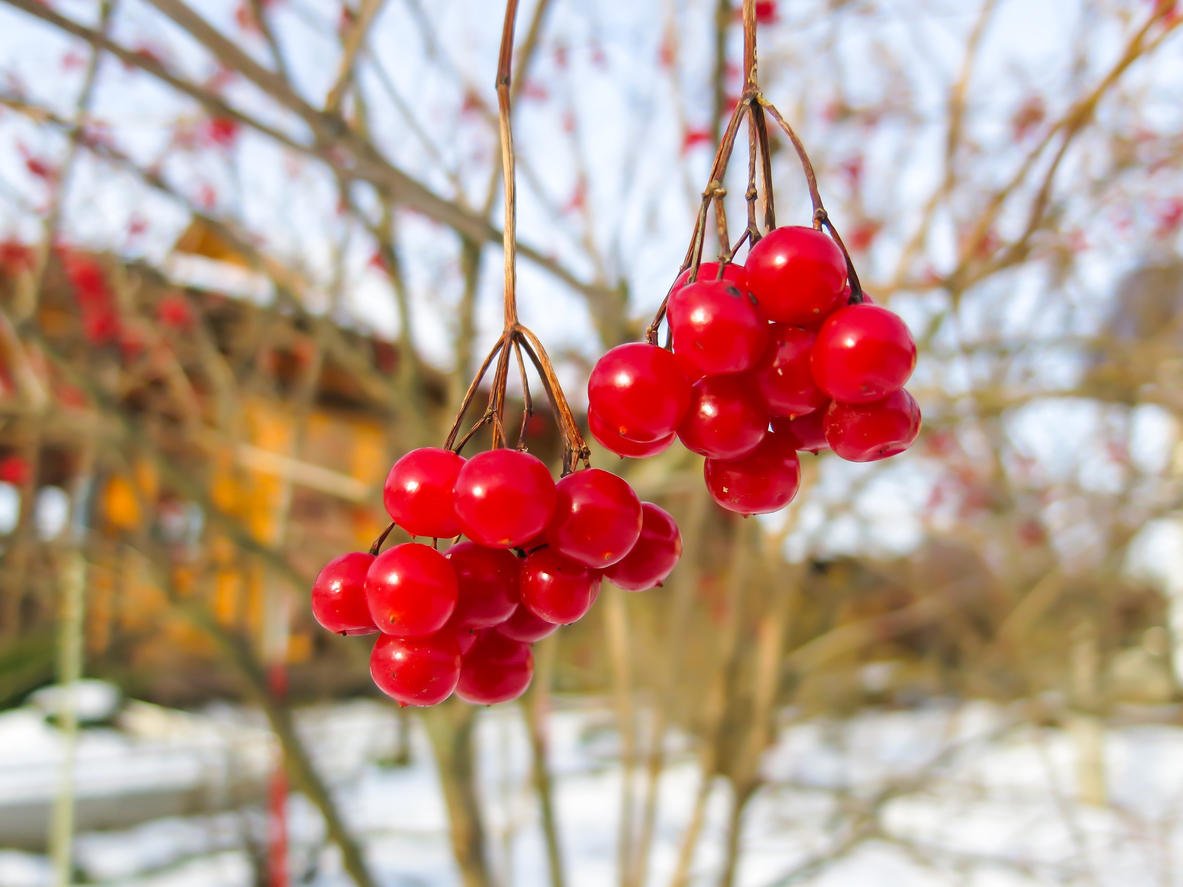
But for people, these berries are valuable, because they are very useful and even healing, like flowers and viburnum bark, used in traditional medicine recipes. There are barren ornamental varieties of viburnum, beautiful foliage, shrub shape, lush inflorescences.
Planting
Viburnum grows in bright places, choose neutral or slightly acidic soil for it. Does not like soils with peat, sandy and podzolic. It can grow on bad soil, but it will not flower and bear fruit well.
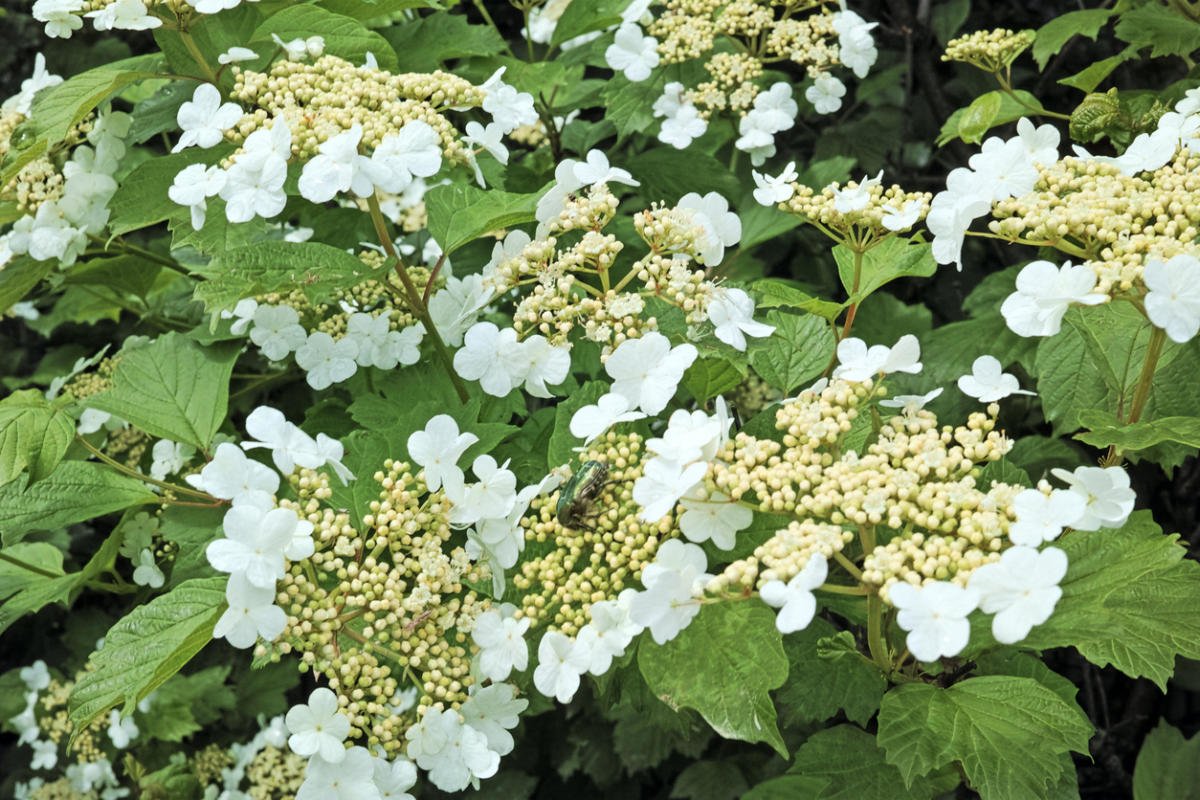
To improve the soil, after about a month, it is enriched with peat and phosphorus-potassium fertilizers. It is better not to use manure to prevent weeds.
Viburnum can be planted in spring and autumn.
- Dig a landing pit 40×50 cm (1.3×1.6 foot), about 40-50 cm deep (1.3×1.6 foot). The distance between the bushes (trees) of viburnum should be about 3 meters (3.3 yard).
- The soil mixture should consist of organic (upper pit earth, peat, humus) and mineral fertilizers (about 3 tablespoons of urea and a glass of wood ash or dolomite). Also remember that the roots should not touch each other.
- Seedlings with closed roots are placed in the center of the pit and sprinkled so that the root neck is not more than 5 cm (2 inch) deep.
- Seedlings with open roots are planted so that the roots are as if on an embankment of the soil mixture, spreading the roots and covering them with earth.
- After planting, make a well around the tree trunks and water the plant. Next, the soil is mulched from above with sawdust or peat.
Reproduction
Dividing the bush
This method is used when the variety is very valuable, so as not to lose its features or if you want to transplant the viburnum to a new place. In this case, you need to divide the bush into several parts, but each part should have at least three buds. Bushes can be divided into spring and autumn.
The precipitate
June — early July-the time of harvesting green cuttings. It is important to maintain their flexibility. Cut them so that each has at least 3 knots, the length of the trunk is about 10 cm (3.9 inch), cut the lower oblique ones and cut off the leaves.
You can also make your own medicine for better growth . You need to plant in a greenhouse, bury the cuttings in the soil for 2 cm (0.8 inch) with a soil mixture consisting of peat and river sand 1: 1. Cover the greenhouse with a film or glass for rooting the cuttings. For three weeks, they grow at a temperature of +27°to +30°C (80.6-86 °F) and high humidity (70%). Young cuttings need watering (spraying). In the spring, they are planted in the ground for a permanent place. After 2 years, the young cuttings will bloom.
Marcottage
In the spring, it is necessary to prepare grooves for annual shoots, put the shoot in the groove and sprinkle it with earth, attach the wire, the tip of the shoot should be buried. Over the place where the soil is filled in, you need to pull a wire shoot and cut it. By autumn, roots will appear on such horizontal plots, the buds will give young new shoots, then the shoots are cut from the mother plant and planted in a permanent place in the garden.
Viburnum seeds are rarely propagated, because seedlings appear after a long time, after a year or two, and the berries are bitter and small, in small brushes.
Caring for
Watering
Young seedlings are watered in the evening, scattering the soil by 40 cm (1.3 foot). Adult plants are watered during the growing season and the formation of berries.
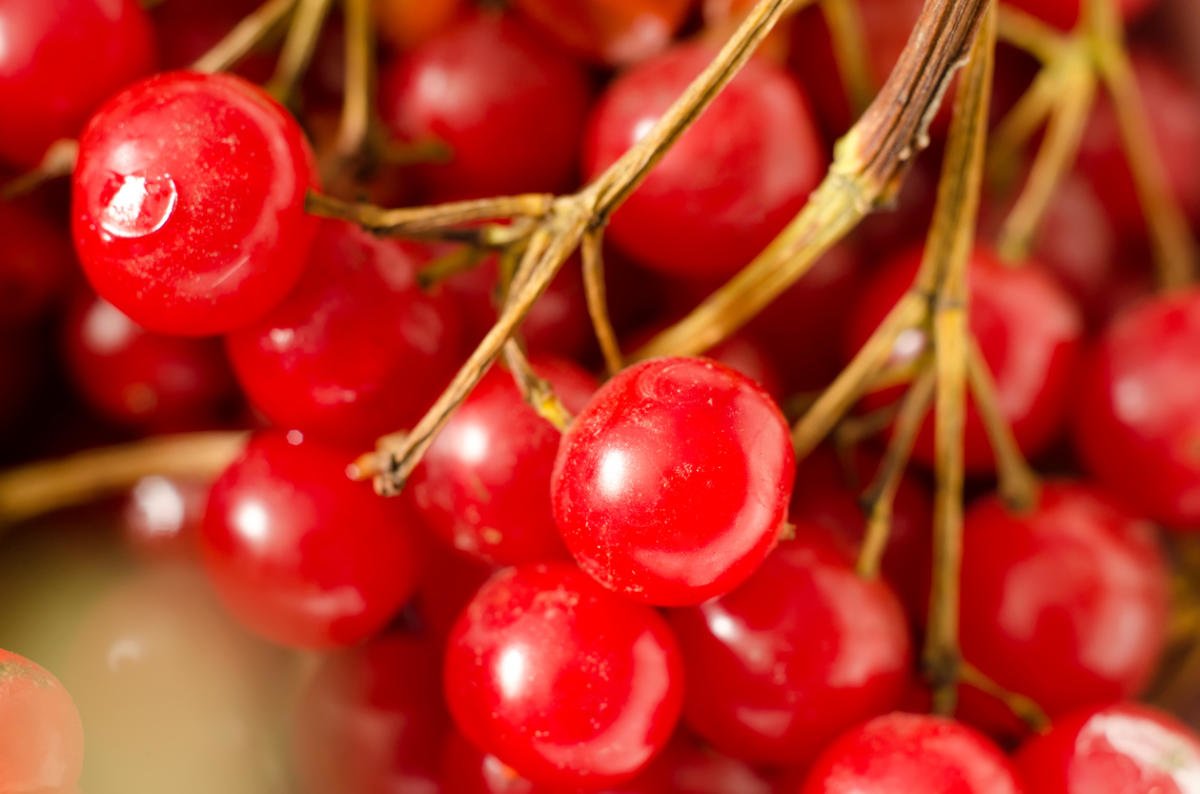
Top dressing
- In the spring, before the leaves run, you need to add about 2 tablespoons of carbamide to the tree trunks.
- Before the flowering of the shrub, about 2 tablespoons of potassium sulfide are added to the tree trunks. But wood ash suits the best.
- In mid-summer, about 60 g (2.1 oz) of complex fertilizers are applied under viburnum.
- After 2 years in the fall, when you dig up the soil, populate it with rotted manure and phosphorus-potassium fertilizers. In case of drought, mineral fertilizers can be dissolved in water.
Pruning and shaping the crown
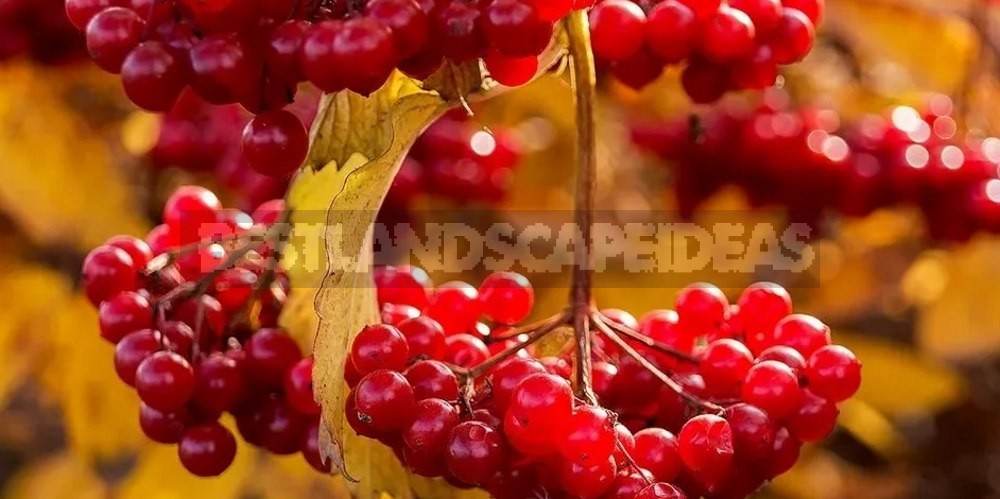
Viburnum branches can grow up to 40 cm (1.3 foot) or more. Spring pruning is recommended, it is necessary to form the crown, remove unnecessary and diseased branches.
For more mature plants, this is not an additional rejuvenating pruning. As a rule, the rejuvenation of viburnum is made within 6 years after planting. To do this, cut off the old shoots of the root seedlings. A weak, almost non-flowering shrub will keep the crop at the root, at a height of about 20 cm (7.9 inch) from the ground surface.
If your viburnum belongs to fruit varieties, form a bush of about 7 skeletal branches, remove the remaining branches.
To make it lush and beautifully bloomed under the bush, shoots longer than 40 cm (1.3 foot) were pressed to the ground with their hands.
If you cut the viburnum as a tree, then you need to leave one main vertical shoot and remove all the others. In subsequent years, it is necessary to remove all side shoots as a result of root growth. The result is a smooth trunk with a height of about 2 m (6.5 ft). In order for the crown to begin to appear most beautifully, press down on the growth point, then the tree will branch. If there is a strong thickening, then in this case you need to thin out the crown.
Harvest
The collection of viburnum berries begins after a cold snap, then they lose their bitterness. Next, the berries can be used for drying, freezing, making cocktails and jam. You can prepare viburnum with honey and take it as a tonic – 1 scoop on an empty stomach.
Varieties
Viburnum belongs to the family Caprifoliaceae and the genus Viburnum. This has a huge number of types – about 200. We will tell you about several varieties.
Snowball
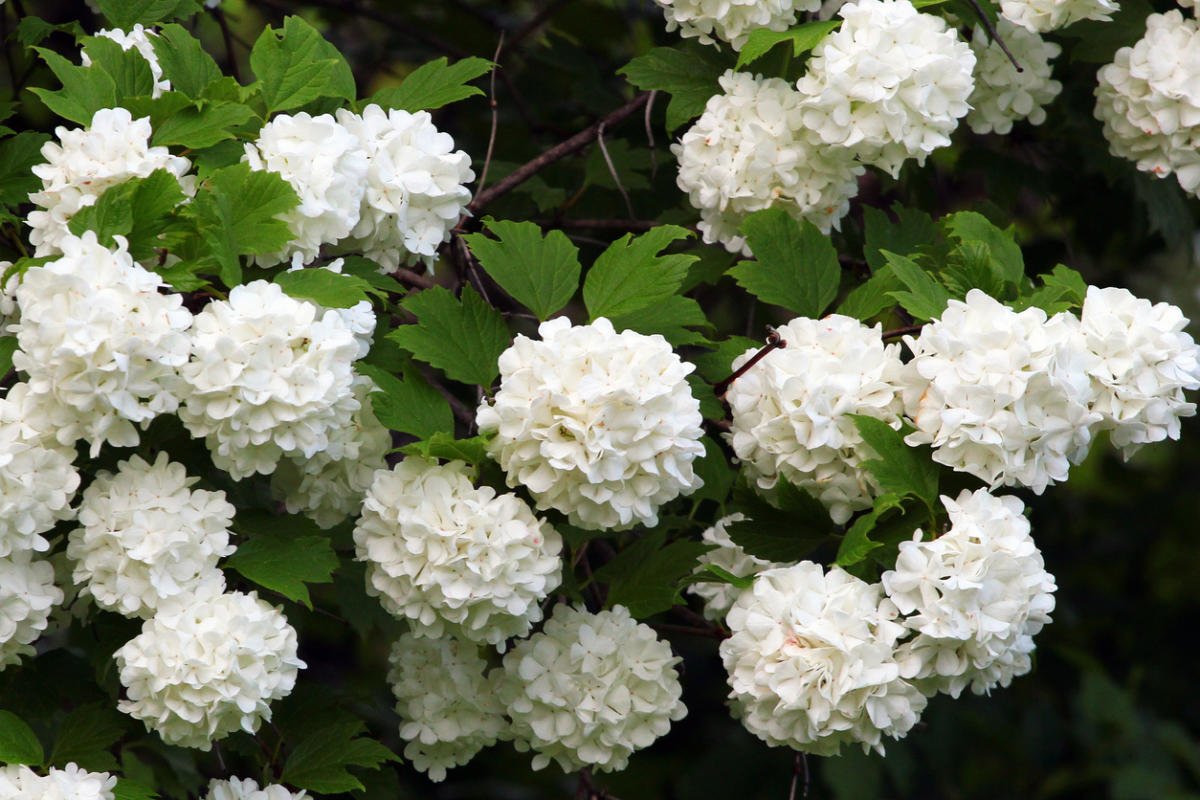
A very beautiful decorative variety of viburnum that does not have berries, inflorescences are spherical, lush, flowers are initially greenish-white, after the end of flowering they turn slightly pink.
Farreri ‘Nanum’
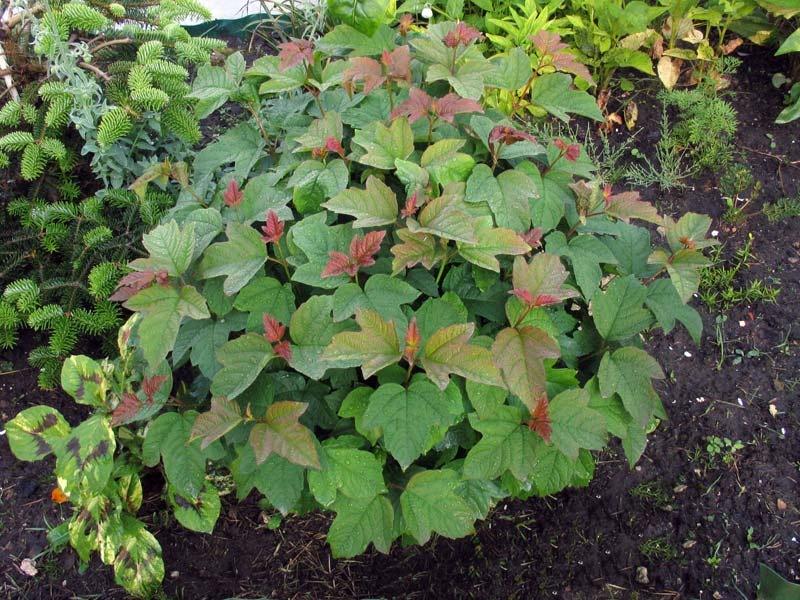
Ornamental plant with dwarf shape, up to 1 m (3.2 ft), leaves small, carved, young leaves reddish. Does not bloom. Unpretentious in care.
Lantana Aureum

Beautiful viburnum 1-2 m (3-6 ft) tall with golden leaves and bright red fruits. In the shade, the leaves lose their beautiful yellow color.
Opulus Xanthocarpum
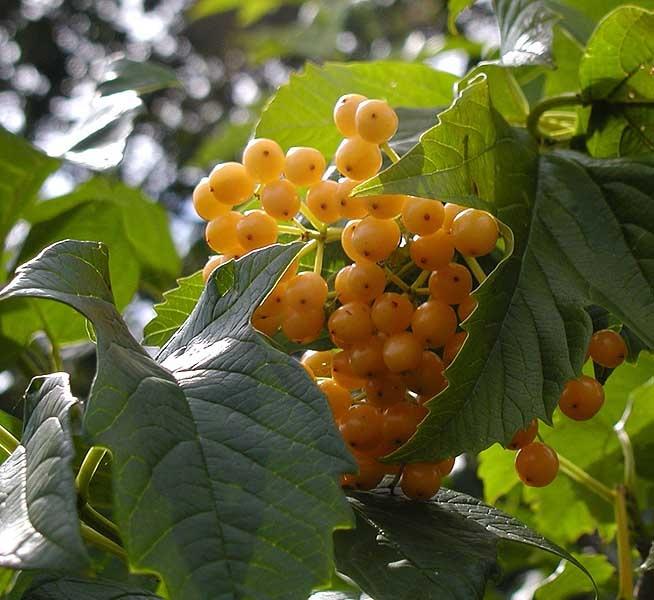
A rare variety of viburnum with yellow fruits and serrated large leaves. It reaches a height of 1.5 m(5 ft), with a crown girth of up to 2.5 m (8 ft).



